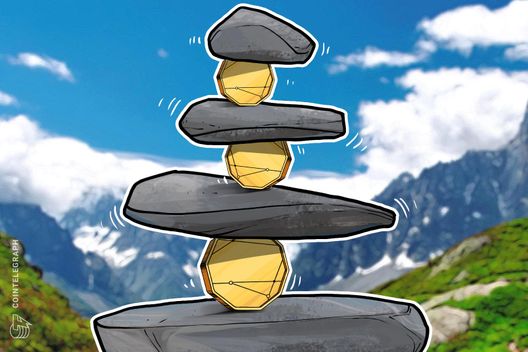Let First Republic and Credit Suisse burn
When crypto markets took a hit after the collapse of FTX and other crypto lenders last year, some crypto critics repeated the mantra, “Let crypto burn.” Now, it’s big banks that are faltering — including Credit Suisse and First Republic — after regional banks, including Signature Bank and Silicon Valley Bank, sparked a cascade. As a result, Moody’s has downgraded the entire banking sector.
If “Let crypto burn” was a snappy way of saying that operating outside the financial system means more personal responsibility and heightened risk, fine, crypto natives understand that concept. But now, we have a chance to turn a critical lens on the traditional financial system.
With traditional banks experiencing financial pressure, it’s time to let many of them fail. Forest fires can burn away old growth to make way for new trees to sprout. The same principles apply to banking.
Politicians and crypto critics have aligned to build the narrative that crypto is the risk at the heart of the crisis. The dirty little secret is that Treasury bonds were the nuclear bomb at the epicenter of this banking crisis, and central bank interest rate policy was the plane that delivered the payload.
Related: How credible is the ‘Operation Chokepoint’ theory?
These struggling banks loaded up on long-term treasury bonds during a period of near-zero interest rates and at a time when the United States Federal Reserve continued to try to mollify banks that they would keep rates near zero for the foreseeable future.
There is an unavoidable tradeoff between low-interest rates and inflation; Fed macroeconomists know this, and yet the Fed acted with surprise as it quickly raised rates to catch up to the inflation wildfire over the last two years. A steep rise in rates made the old long-term treasuries — the ones paying very low interest — sharply decrease in value. When depositors demand their money back (with heightened speed in the era of internet banking) and all you have to sell to pay them are junk Treasuries, you have a problem.
The Federal Reserve has given Treasury bond holdings preferential treatment in its regulations and supervisory approaches (including those from which SVB was recently exempted). This puts blame on the Federal Reserve from two directions, its surprise about-face on interest rate policy and its regulatory policy favoring Treasury holdings.
War stories are tedious but I will tell one. When I was senior counsel at House Financial Services in 2014 I subpoenaed the Fed about its management of conflicts of interest over its running a payment system. Turned up crazy stuff…they totally use regulation to help Fedwire. https://t.co/4V3qjUTkub
— J.W. Verret, JD, CPA/CVA (@JWVerret) March 16, 2023
There are many highly inefficient aspects of TradFi, where rotten trees are choking the growth of new sprouts. Some are a result of similar pathologies where the government uses the banking system to subsidize its own political objectives. It would be better for the economy to let them burn.
Much of the business model of taking in fiat short-term, on-demand deposits, and parking that money in illiquid long-term Treasurys (subsidizing the government) or mortgage-backed securities (where the government subsidizes unaffordable home prices) needs to burn away.
Rent-seeking brick-and-mortar facades, with most customer service outsourced overseas and who earn most of their revenue from overdraft fees, need to burn. Payment systems that bribe cardholders with “cash back” programs then use the market power their consumer bribes give them to gouge the merchant, need to burn.
Related: The Federal Reserve’s pursuit of a ‘reverse wealth effect’ is undermining crypto
Some smaller and regional banks who have failed to innovate, and for which the otherwise unobtainable bank charter has become the modern-day taxi medallion ensuring them rents from third-party custody of fiat deposits, need to burn away some of the overgrowth as well.
Crypto is a revolution in finance, intended to replace the intermediary-centric financial system with a self-sovereign approach where the individual is able to digitally custody native financial assets themselves.
This transformation will take time. Developers at decentralized finance (DeFi) protocols and layer-1 blockchains live most of their lives in the fiat economy. The federal government will only accept fiat dollars for tax payments, while banks dominate real estate mortgages.
DeFi protocols are making inroads into home mortgages, but that’s at its earliest stages. Consumer finance and tax payments are still fiat-based. And crypto developers at a minimum deserve the same treatment as anyone else participating in the fiat economy. That means they shouldn’t be discriminated against in the provision of basic checking and savings accounts.
We need some of the banking system to survive. But we don’t need all of it to survive, and the parts that burn away open opportunities for crypto-native replacements if banks don’t unfairly discriminate against crypto clients.
J.W. Verret is an associate professor at the George Mason Law School. He is a practicing crypto forensic accountant and also practices securities law at Lawrence Law LLC. He is a member of the Financial Accounting Standards Board’s Advisory Council and a former member of the SEC Investor Advisory Committee. He also leads the Crypto Freedom Lab, a think tank fighting for policy change to preserve freedom and privacy for crypto developers and users.
This article is for general information purposes and is not intended to be and should not be taken as legal or investment advice. The views, thoughts and opinions expressed here are the author’s alone and do not necessarily reflect or represent the views and opinions of Cointelegraph.









